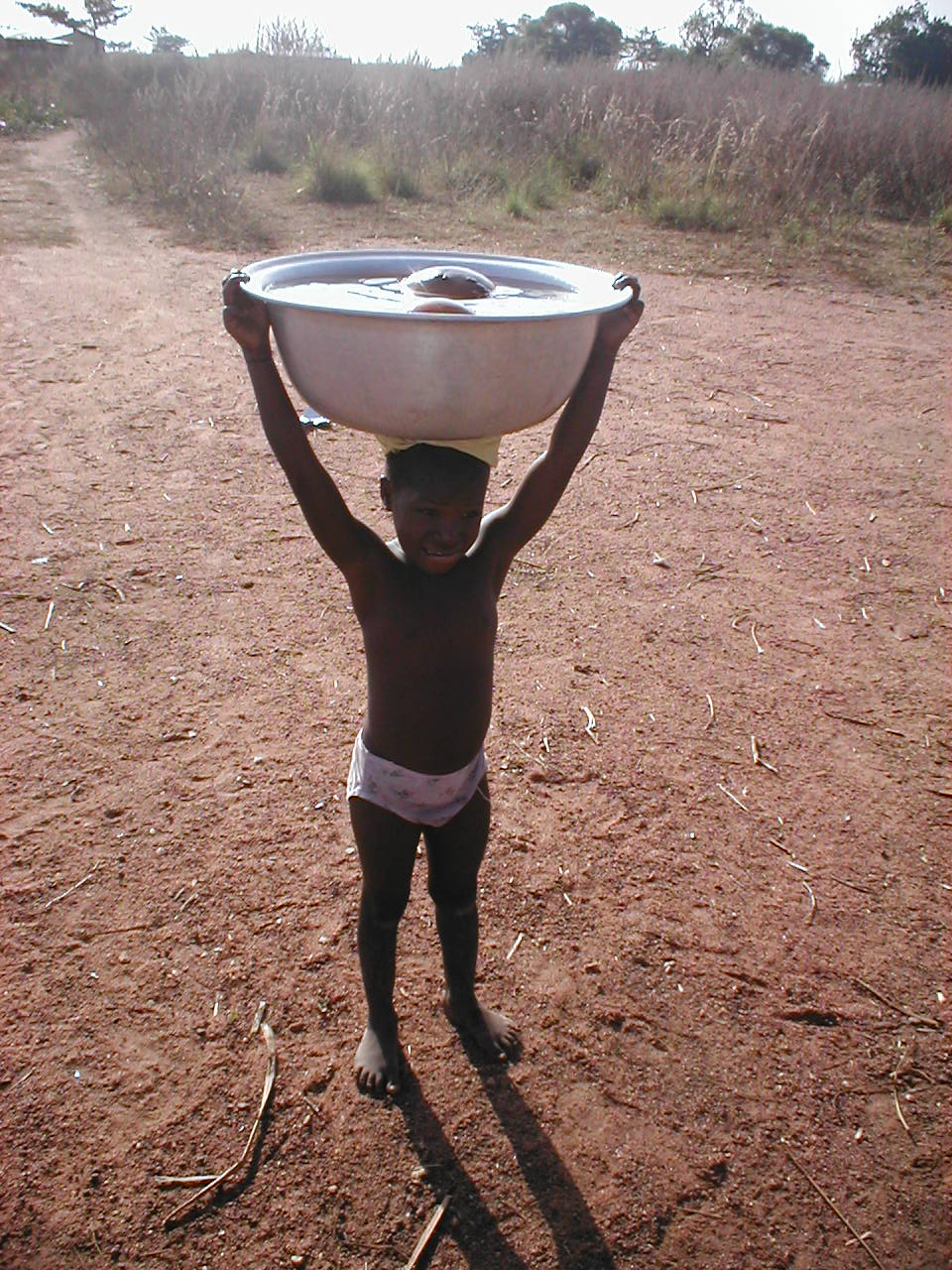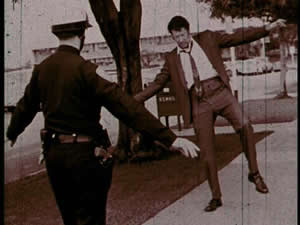A Long Strong Spirited Response
/ Dave Randolph over at iron-body offered a spirited response to my somewhat comic post entitled, "The Two Finger Rule." He offered several challenges to my anti-strength position so I thought it would be a good idea to explore them.
Dave Randolph over at iron-body offered a spirited response to my somewhat comic post entitled, "The Two Finger Rule." He offered several challenges to my anti-strength position so I thought it would be a good idea to explore them.Do you see all the obese, people out there? People who can barely carry their groceries into the house. Frail old ladies & men who can’t get out of a chair by themselves or have to use an extension thing on the toilet so they don’t have to squat down so far.
Yes, I do see them. Obese people eat too much. People get old and die. I'm not sure, because I haven't done it yet, but I think getting old and dying takes a lot of practice. If you try to do it without practicing, you can expect some extra complications. Internal Martial arts like Taijquan can be understood as practicing for death.
Correct strength training does not impede the flow of fluids or qi.
Are you saying that all the old drawings of monks carry water up and down steps, swinging stone lock etc were wrong in trying to build functional strength??
Are you confusing true strength training with body building? Yes building bodies is wrong. It teaches muscle isolation and creates huge muscles that arenot necessarily strong and that will creates circulation issues. But proper strength training, and I’m speaking of barbells & dumbbells, but things like kettlebells, clubbells, sandbags etc, that teach full body integration and coordination, causes so many positive responses the body in terms or weight control, mobility, flexibility, coordination not to mention the positive effects on hormonal balances, sleep, digestion, among other things
If the definition of "correct strength training" is that it does not impede flow of fluids or qi, than I would be inclined to agree. However; the people I've watched training with these AKC Kettle Bells (pictured to the right) do indeed
 restrict qi circulation, and they compress qi as well.
restrict qi circulation, and they compress qi as well.But let's agree to drop the word qi, because it has too many possible meanings for such a concrete disagreement. What I mean by qi in this case is a quality of animation that is characteristic of active children and predatory animals.
 Monks in Asia carry water on their shoulders, people in Africa and South America carry it on their heads. The skill of carrying water is to continuously transfer all of the weight to the ground and not take any of it in your muscles. Since water tends to slosh around, this requires constant movement and is perhaps one of the reasons we see such great hip articulation in dances like the Samba and the Rumba.
Monks in Asia carry water on their shoulders, people in Africa and South America carry it on their heads. The skill of carrying water is to continuously transfer all of the weight to the ground and not take any of it in your muscles. Since water tends to slosh around, this requires constant movement and is perhaps one of the reasons we see such great hip articulation in dances like the Samba and the Rumba.I'll concede that if someone is really good at water carrying and they get help putting the water on their shoulders or their head, they can carry a heavy load and avoid loosing sensitivity.
...Part of my strength training includes lots of mobility work for joints and muscles as well as qi gong.
 I think the Scott Sonnon, Iron-Body, movement to loosen your joints and use awkward weights to stimulate your body to be more efficient is wonderful! Now just drop the strength part!
I think the Scott Sonnon, Iron-Body, movement to loosen your joints and use awkward weights to stimulate your body to be more efficient is wonderful! Now just drop the strength part!I love business, and I love this new health kick. But if you are looking for high level internal martial arts, strength will inhibit your development. My point is not to convince the world I'm right, I don't think sensitivity is for everyone. Perhaps I'm a weakness elitist in that way. Then again, remind what we need strength for?
By the way can you pick up a 75 lb child with two fingers from each hand? No? then how are you going to pick one up & carry he/she if they are injured & can’t walk? Call for someone to help you pick them up?
I would like the world to know that I have two really s
 trong fingers, and I'm undefeated in thumb wrestling. Also, I'm not saying only use two fingers, I'm saying test whatever you are about to lift with two fingers. After the test feel free to add the other fingers, a hip, a chin, or even a whole arm. (And we've all heard the story about the lady who flipped over a car because her baby was underneath it. If you're healthy and you really need the strength, it'll be there.)
trong fingers, and I'm undefeated in thumb wrestling. Also, I'm not saying only use two fingers, I'm saying test whatever you are about to lift with two fingers. After the test feel free to add the other fingers, a hip, a chin, or even a whole arm. (And we've all heard the story about the lady who flipped over a car because her baby was underneath it. If you're healthy and you really need the strength, it'll be there.)As for picking up kids, two fingers in the armpits usually works, but in my experience they are not shy about biting, better to get help.
Since an injured kid is one less kid I have to teach, I should leave it at that but... I noticed the Iron-Body website does trainings for firefighters who obviously a
 re in the business of rescuing people and their kids. This is great stuff. I admire the business model. But it does raise the question, do firefighters really need extra strength?
re in the business of rescuing people and their kids. This is great stuff. I admire the business model. But it does raise the question, do firefighters really need extra strength?You know those ninja shoes? Well, they aren't actually ninja shoes, they are called jika tabi. All construction workers wear jika tabi in Japan. That's right, Japanese construction workers think of themselves as crafts people, not laborers. They don't drop things on their feet, so they don't need steel-toed boots. Sometimes conventional thinking is a limitation.
When I was born, all the fire fighters in San Francisco were straight, white, over 6 feet tall, male, and at least 185lbs. We had a Whites Only Union until 1990! San Francisco currently has twice as many fire fighters, engines, and firehouses as we need. When
 ever a city official with balls comes along, the Unions go to the sentimental-fireman-gushing-voters and have that official castrated.
ever a city official with balls comes along, the Unions go to the sentimental-fireman-gushing-voters and have that official castrated.If we didn't have to pay for all that fire fighter corruption we could afford to design and build all new lightweight efficient equipment and we could even have midget fire fighters. Strength is an issue here only because it protects a class of aging, compassionate and heroic men--that should have been let go a long time ago.

 Just a simple image for today.
Just a simple image for today.
 I've got lots of material lined up to write about but much of it is in the category of "mind blowing" revelation and reinterpretation, so I want to really take the time to do it right. That means a lot of metaphorical heavy lifting, perhaps long posts broken up into sections. So I'm offering something a little lighter for tonight.
I've got lots of material lined up to write about but much of it is in the category of "mind blowing" revelation and reinterpretation, so I want to really take the time to do it right. That means a lot of metaphorical heavy lifting, perhaps long posts broken up into sections. So I'm offering something a little lighter for tonight. Building up strength cuts off fluid circulation, and reduces sensitivity. The more strength you build, the less ability you have to continuously engage every millimeter of your body. Our bodies are dynamic enough that we can be more like tigers and octopuses, or we can be more like oxen and yaks. Which type of animal you are like depends a little on personal preference and a lot on fate. If you have the fate to practice internal martial arts than you can cultivate weakness like a tiger or an octopus.
Building up strength cuts off fluid circulation, and reduces sensitivity. The more strength you build, the less ability you have to continuously engage every millimeter of your body. Our bodies are dynamic enough that we can be more like tigers and octopuses, or we can be more like oxen and yaks. Which type of animal you are like depends a little on personal preference and a lot on fate. If you have the fate to practice internal martial arts than you can cultivate weakness like a tiger or an octopus. One of the most common ways to injure ones back is to reach for a heavy pot on the back of the stove. If you follow the Two Finger Rule you'll be sure to pull that pot of black-eyed peas and bacon to the front burner before trying to pick it up.
One of the most common ways to injure ones back is to reach for a heavy pot on the back of the stove. If you follow the Two Finger Rule you'll be sure to pull that pot of black-eyed peas and bacon to the front burner before trying to pick it up. One of the basic ideas of Systems Theory is that if you have a complex system and you speed up one part of that system, you will slow down the whole system.
One of the basic ideas of Systems Theory is that if you have a complex system and you speed up one part of that system, you will slow down the whole system. To feel your body or not to feel your body, that is the question.
To feel your body or not to feel your body, that is the question. Traditionally strange feelings and disembodied feelings were covered under the subject: trance and possession. Now we have the scientific categories of proprioception and kinesthetic awareness.
Traditionally strange feelings and disembodied feelings were covered under the subject: trance and possession. Now we have the scientific categories of proprioception and kinesthetic awareness. I've been looking for information on Daoist ritual shoes. I was sure that somewhere I'd seen special Daoist ritual shoes which are 3 inch high stilts. These shoes make it impossible to put weight on the toes or the heel since the stilt post goes down from the center of the foot. Since the base the the stilt is thicker at the bottom, kind of like a mushroom, there is a plenty of space to balance. The problem is I have been unable to find these shoes (so no picture). Did I dream them? How embarrassing.
I've been looking for information on Daoist ritual shoes. I was sure that somewhere I'd seen special Daoist ritual shoes which are 3 inch high stilts. These shoes make it impossible to put weight on the toes or the heel since the stilt post goes down from the center of the foot. Since the base the the stilt is thicker at the bottom, kind of like a mushroom, there is a plenty of space to balance. The problem is I have been unable to find these shoes (so no picture). Did I dream them? How embarrassing. Dream or not, these shoes represent ultimate shamanic power. The symbolic steps Daoists take in ritual cover huge distances. They circumambulate the empire, the world, and they traverse the distances between stars in the sky.
Dream or not, these shoes represent ultimate shamanic power. The symbolic steps Daoists take in ritual cover huge distances. They circumambulate the empire, the world, and they traverse the distances between stars in the sky.
 A person standing on two feet is an unstable structure.
A person standing on two feet is an unstable structure. In Japanese, which uses Chinese written characters, Dao becomes "do," in many familiar arts like Karatedo, Judo, Aikido, Budo (the warrior code), and Chado (the art of tea).
In Japanese, which uses Chinese written characters, Dao becomes "do," in many familiar arts like Karatedo, Judo, Aikido, Budo (the warrior code), and Chado (the art of tea). There is a Daoist precept against subordination. In fact there is a precept (one of the 180 of Lord Lao) that says, "Do not serve in the military. If you must serve in the military do not serve in a subordinate position." I take this to mean join as an officer and be in a position to make decisions about life and death.
There is a Daoist precept against subordination. In fact there is a precept (one of the 180 of Lord Lao) that says, "Do not serve in the military. If you must serve in the military do not serve in a subordinate position." I take this to mean join as an officer and be in a position to make decisions about life and death.
 When a shaman purifies a space, she uses her acquired strength to forcibly evict all the ghosts and spirits that have taken up residence there. Since Daoists did not practice subordination to other entities and they were weak by precept and commitment, they didn’t actually purify the space immediately. Instead they bowed. The act of bowing is a declaration that human beings are going to temporarily use the space for meritorious actions. Bowing doesn’t scare away ghosts, or banish them. Bowing is a way of asking spirits to temporarily clear out. It is a declaration that the practice about to be performed will not be of any interest to ghosts. A ghost is an entity defined by weak, deficient, or lingering commitments.
When a shaman purifies a space, she uses her acquired strength to forcibly evict all the ghosts and spirits that have taken up residence there. Since Daoists did not practice subordination to other entities and they were weak by precept and commitment, they didn’t actually purify the space immediately. Instead they bowed. The act of bowing is a declaration that human beings are going to temporarily use the space for meritorious actions. Bowing doesn’t scare away ghosts, or banish them. Bowing is a way of asking spirits to temporarily clear out. It is a declaration that the practice about to be performed will not be of any interest to ghosts. A ghost is an entity defined by weak, deficient, or lingering commitments.
 I hope you all had a lovely Halloween, hah, hah, haaa!
I hope you all had a lovely Halloween, hah, hah, haaa! The cult of Xian is extremely diverse. While there are some general suggestions about how to go about becoming a Xian, even manuals and programs to follow, there really is no method that works every time. Even though there are routes by which one may become a xian, like "Rising up in broad daylight with one's dogs and chickens," every process of becoming Xian is truly unique for that person, time and place.
The cult of Xian is extremely diverse. While there are some general suggestions about how to go about becoming a Xian, even manuals and programs to follow, there really is no method that works every time. Even though there are routes by which one may become a xian, like "Rising up in broad daylight with one's dogs and chickens," every process of becoming Xian is truly unique for that person, time and place.